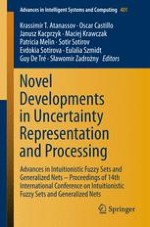2016 | OriginalPaper | Buchkapitel
Proposed CAEva Simulation Method for Evacuation of People from a Buildings on Fire
verfasst von : Jacek M. Czerniak, Łukasz Apiecionek, Hubert Zarzycki, Dawid Ewald
Erschienen in: Novel Developments in Uncertainty Representation and Processing
Aktivieren Sie unsere intelligente Suche, um passende Fachinhalte oder Patente zu finden.
Wählen Sie Textabschnitte aus um mit Künstlicher Intelligenz passenden Patente zu finden. powered by
Markieren Sie Textabschnitte, um KI-gestützt weitere passende Inhalte zu finden. powered by
